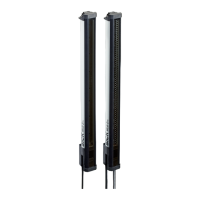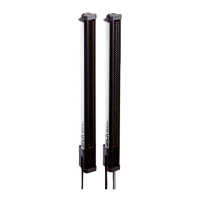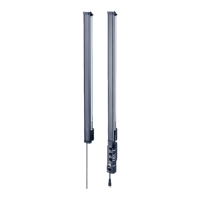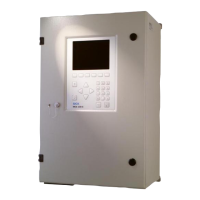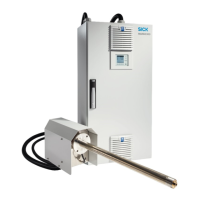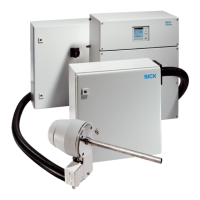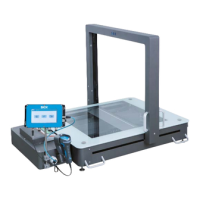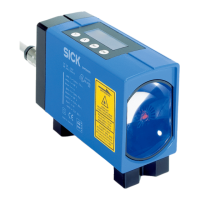4.2.3 Minimum distance from reflective surfaces
Reflective surfaces between the sender and receiver may result in disruptive reflections
and be
ams bein
g deflected and, hence, result in a failure to detect objects.
In the case of reflective surfaces, a minimum distance must be maintained between
the reflective surface and the light beams to ensure reliable operation.
This minimum distance depends on the distance between sender and receiver and on
the operating range.
0 mm
5
0 mm
100 mm
150 mm
0.0 m 2.0 m
X
Operating range
Minimum distance
Y
Figure 24: Graph, minimum distance from reflective surfaces
This dis
tance also applies to reflective surfaces located next to the light grid (parallel to
the sending/receiving axis).
4.3 Mounting procedure
b
Mount the sender and r
eceiver at the same height. For minor adjustments when
aligning, the sender and receiver can be adjusted in the brackets.
b
If possible, mount the top bracket at a height such that the offset in the housing of
the MLG-2 sits on the bracket. This prevents the MLG-2 from sliding down.
Figure 25: The sender and receiver are aligned incorrectly
The end with the cable connection must point in the same direction for both devices.
Sender and receiver must not be installed at 180° rotated relative to each other.
4 MOUNTING
28
O P E R A T I N G I N S T R U C T I O N S | MLG-2 Prime 8018715.16YM / 2020-02-13 | SICK
Subject to change without notice

